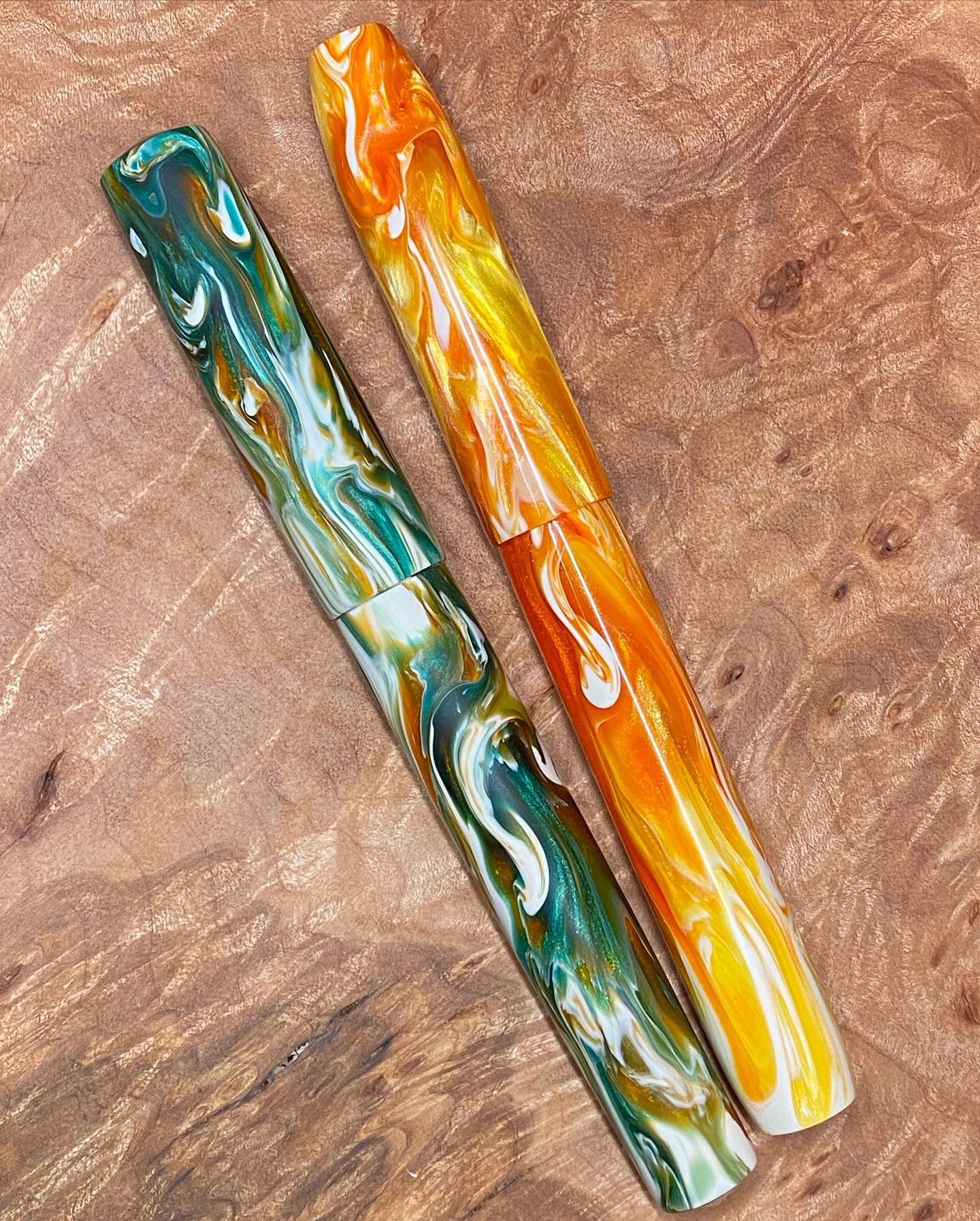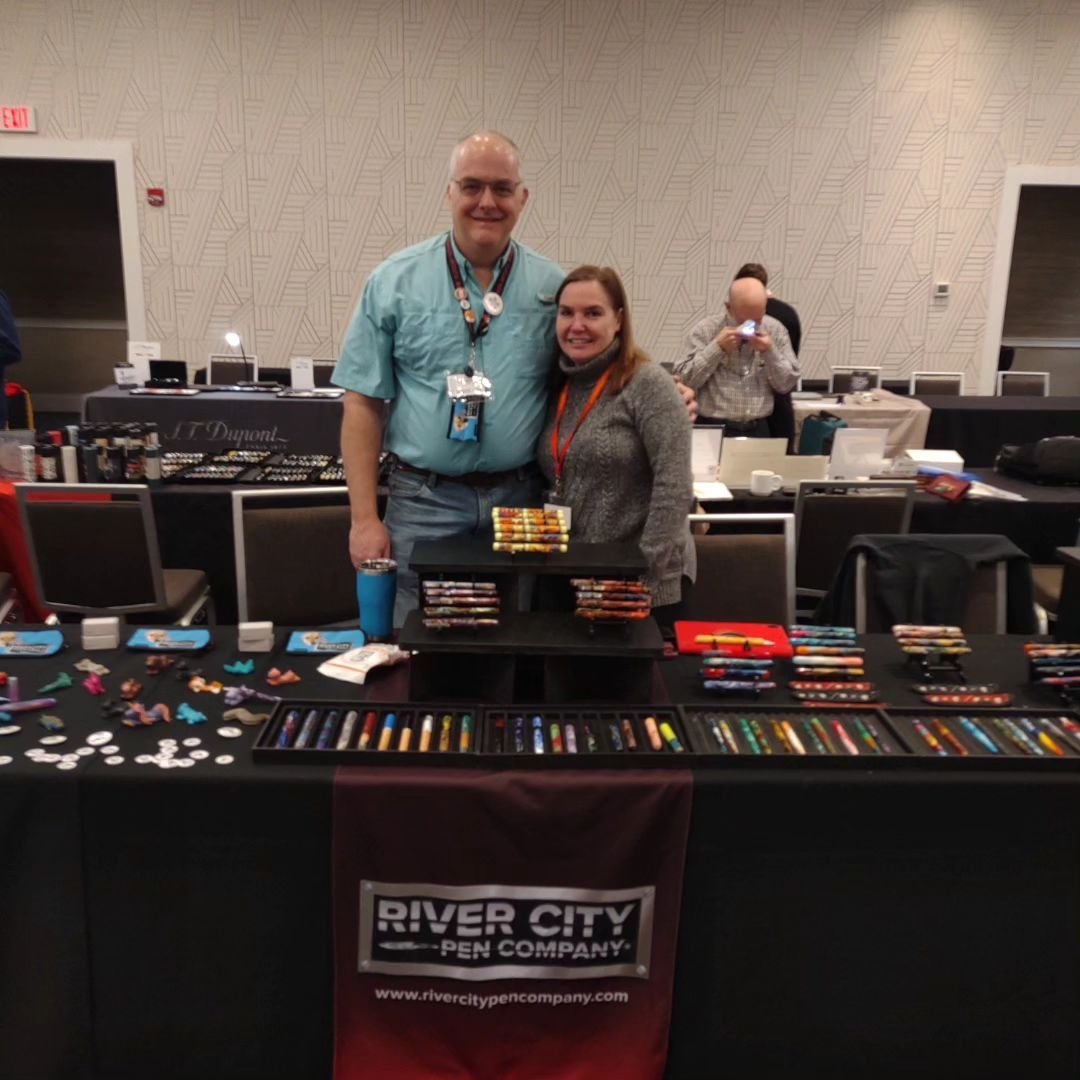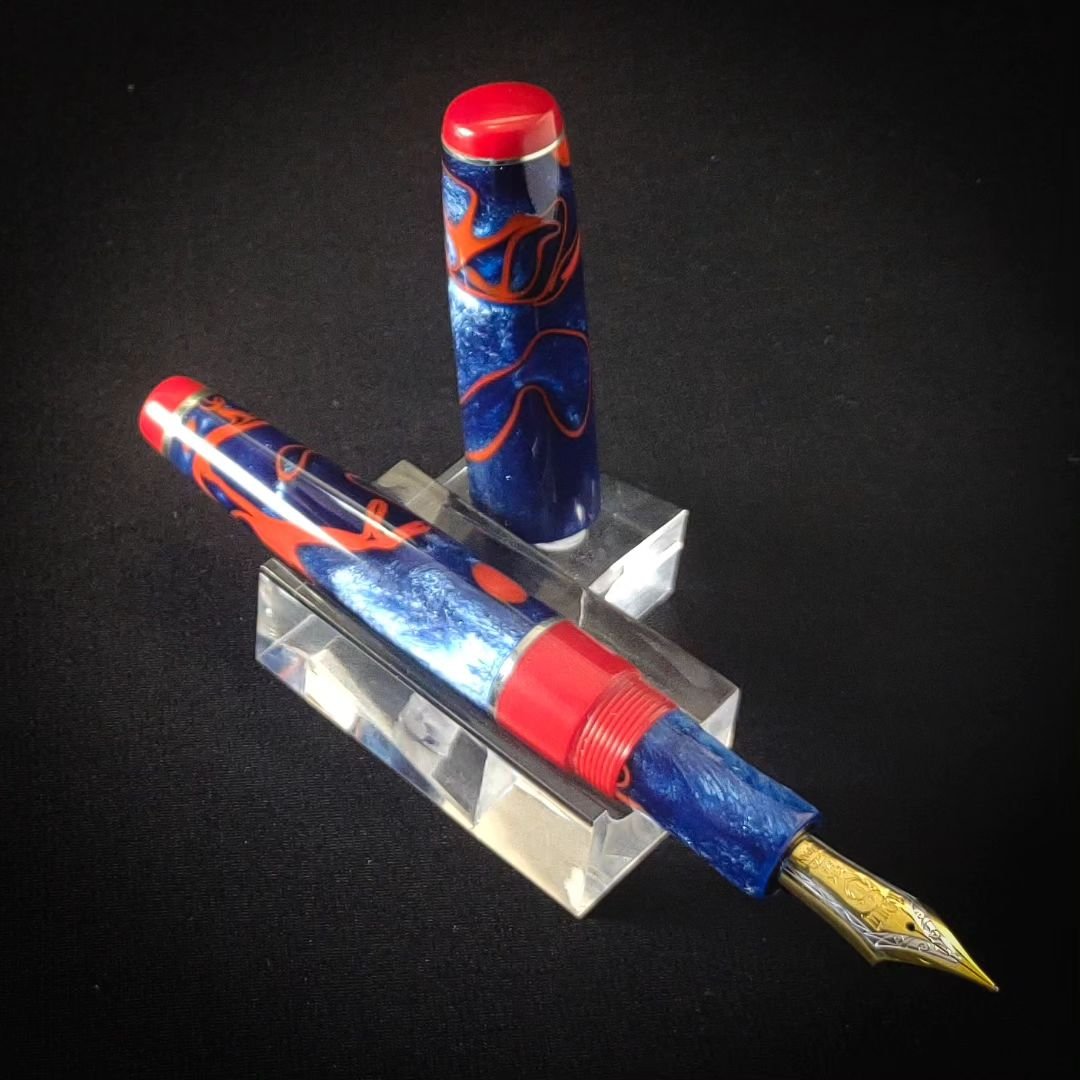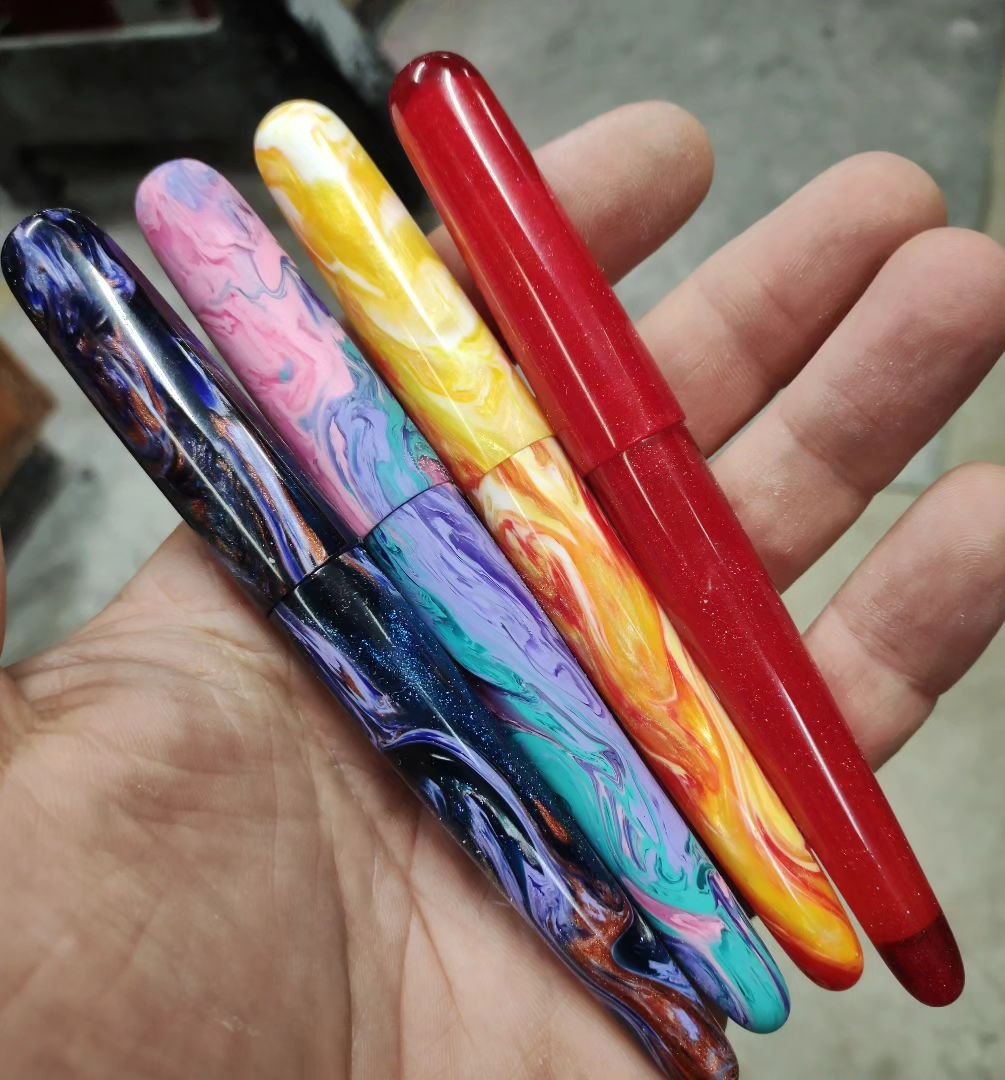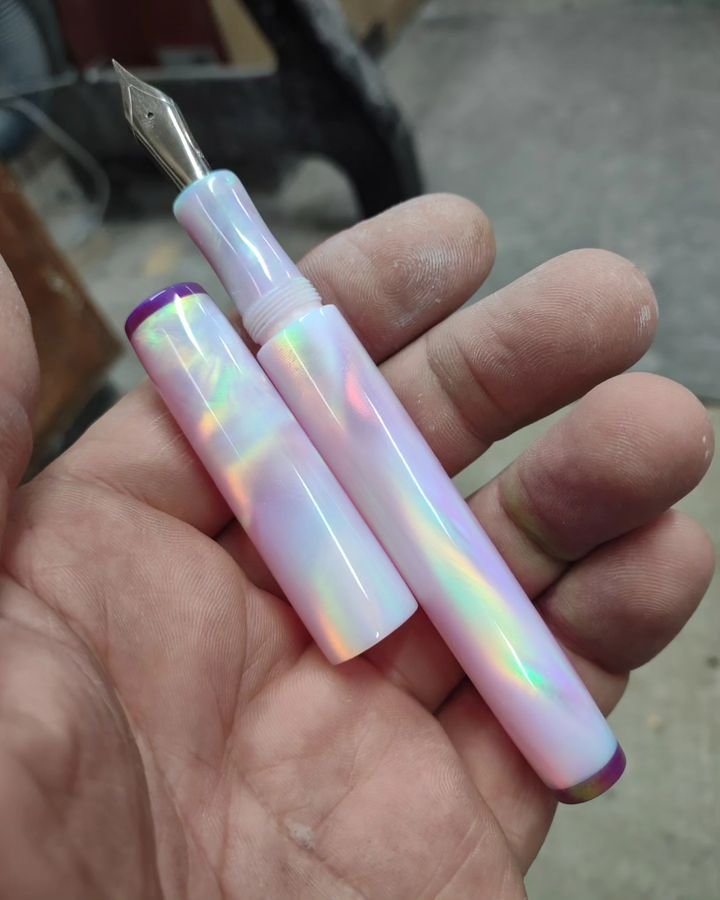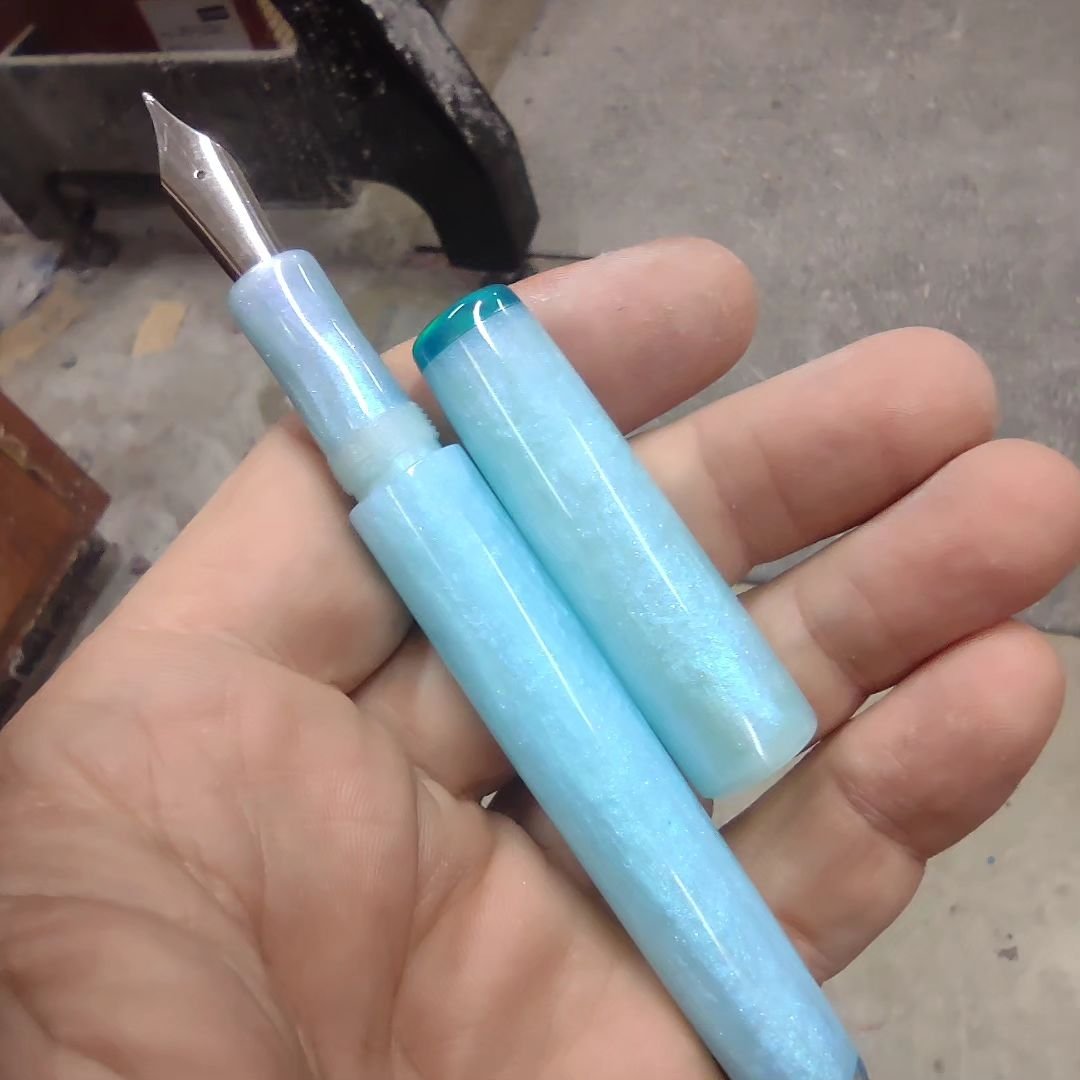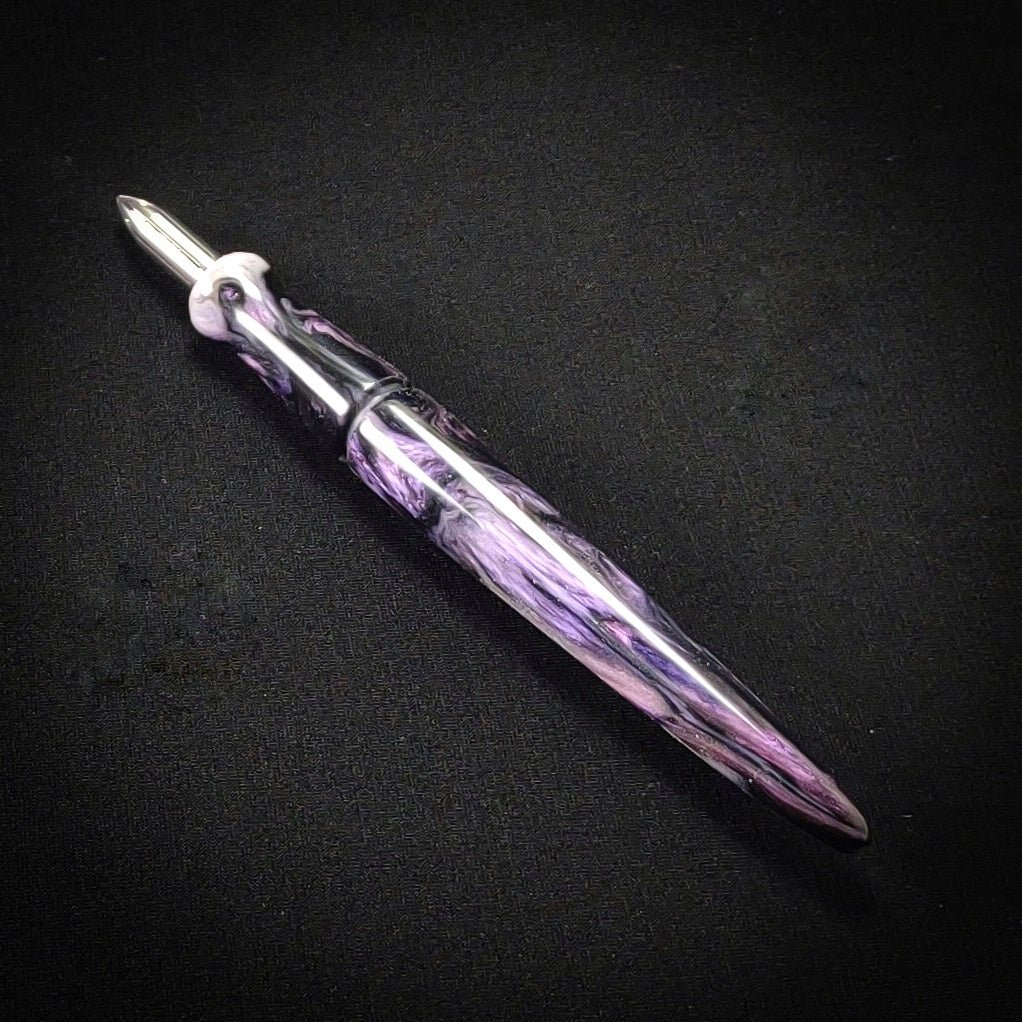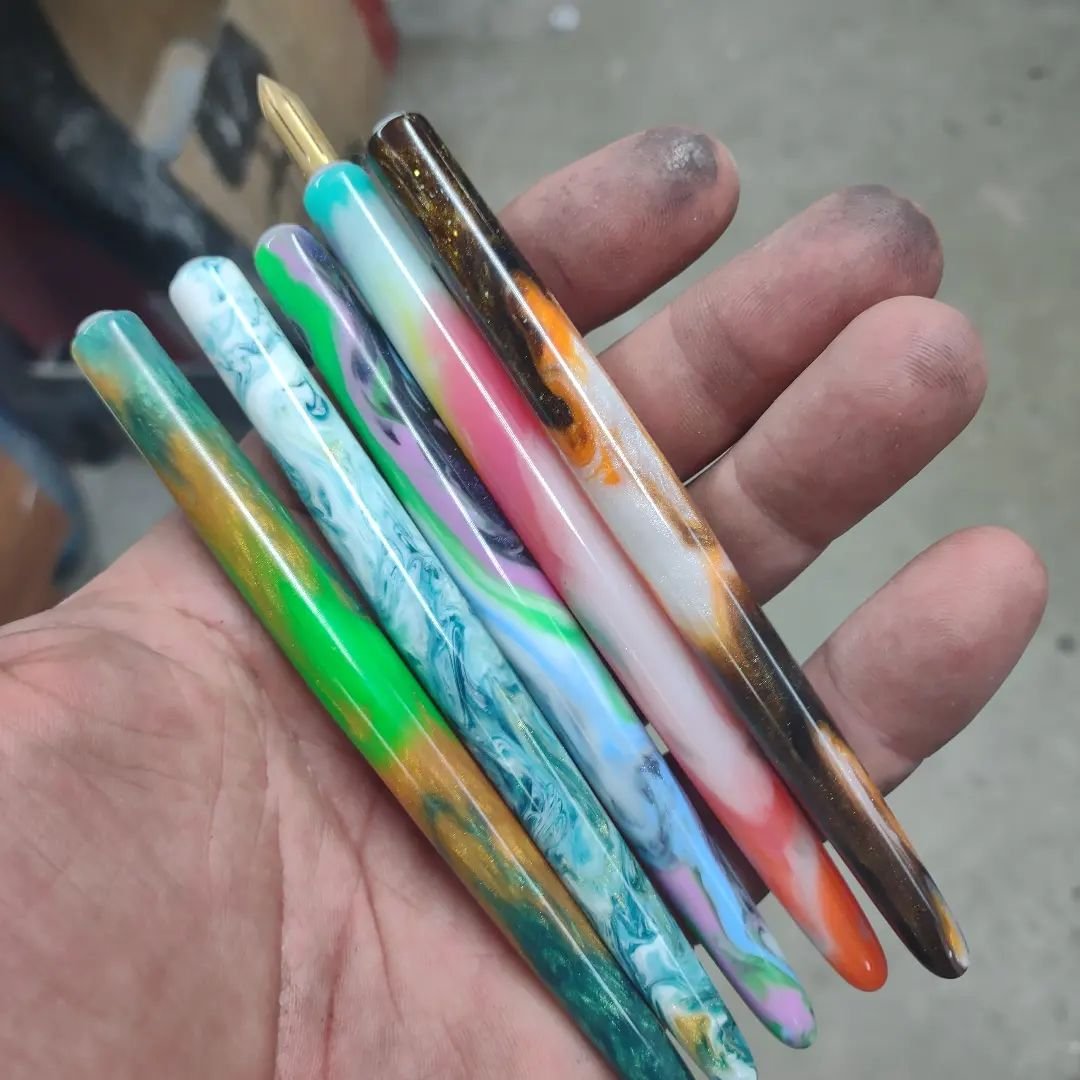(Caroline Foty's first fountain pen was a 1970s Sheaffer No Nonsense that still writes perfectly. Since she discovered pens by independent makers, she wants "one of each, please" and wants to meet all the makers. Maybe you do, too. She lives in Baltimore with pens, cats, and all kinds of fiber arts supplies.)
“I come from a family of designers and makers,” says Nikki Egleton-Volz. She learned to make kit pens in her father’s woodshop when she was in grade school and really enjoyed the experience of being in the shop with him. Although she steered away from the lathe for several years after high school, several things brought her back to it.
First came blanks. Unlike many pen makers who add blanks to their repertoire as a second offering, for Egleton-Volz, casting blanks came before making pens. “My dad said if I made blanks, he’d buy some.” A bachelor's degree in Entertainment Design gave her a solid foundation for casting and mold-making, so she was comfortable trying the casting techniques shared by blank-maker and YouTuber Zac Higgins of Resin Werks Studio. Before making her first blanks, she made her own mold to cast them, by designing and 3D printing a form and pouring silicone into it.
Next, her husband expressed interest in learning woodworking. They went from their home in the Pittsburgh area to Philadelphia to visit and play in her father’s home shop. That was enough to lead them to go ahead and get their own lathe and set up a workshop, making rollerballs, ballpoints, and mechanical pencils from kits.
Then came fountain pens. Like many of us who develop a taste for fountain pens, Egleton-Volz was one of those kids who loved stationery and found shopping for school supplies a favorite part of the year. She inherited her love of papers, notebooks, and writing tools from her mother who always encouraged her to keep a journal. Upon acquiring a Rhodia Goalbook, she searched for information online about how people were making use of their Goalbooks and saw lots of people using fountain pens. “The TWSBIs looked like too much drama and I didn’t need another complicated hobby. Eventually, I saw a Pilot Varsity at Michaels and got one out of curiosity.” Having enjoyed it, she stepped up to a LAMY Safari “and one of every size nib,” started watching Goulet Pens videos, and soon had a large collection of fountain pens and inks.
She began making a few fountain pens from kits, but also watched more videos about pen making and soon found the videos by Bob Blanford on how to turn a kitless pen. Although her husband still enjoys making kit pens, the kitless approach appealed to her, and she began acquiring the tools to make them.
At this point, Egleton-Volz’s professional experience came to her aid. “I designed a pen in CAD and then built it.” Her day job is as a manufacturing designer and drafter at a machine shop that makes very large, highly regulated parts and assemblies. “CAD is my bread and butter! It is how I make a living 40 hours per week.” The resulting pen is her Contour model, and the circle from childhood to her own shop was complete.
Technology plays a larger role in Egleton-Volz’s pen-making journey than it does for most pen makers. Although she used to offer freelance CAD services, she no longer does this. “In my time away from my full-time work I prefer to draft whatever I want, not so much what someone else wants.” She has been pondering the idea of offering a CAD workshop for pen makers, although she is still unsure of the best way to go about it.
The technology of which she is a master lends itself to various stationery accessories. In addition to 3D printing forms for the construction of the blank molds she both uses and offers for sale, she has also exploited the same technology to create colorful puzzle-piece-shaped ink sample vial holders.
Inspiration for free-time drafting usually comes from trying to solve a common problem for fountain pen enthusiasts, and features requested in commissioned pens. She is currently working on the design for a pull-cap pen with no threads – “The failure rate is higher than I’d like at the moment! I need to improve my production process to ensure more of the new pen models turn out as intended.” She is also thinking about how to produce a poseable silicone rubber roll stop to be wrapped around the cap of any clipless pen.
So – frogs? The name of her business came from her lifelong love of frogs. “I love frogs” morphed into “Olive Frogs.” The green frog in the finials of her pen caps is made by the same mold-making process of designing and 3D printing forms, pouring silicone into those forms, and then casting resin into those forms. That froggy color also graces her favorite pen, a green Diplomat Aero. Having gotten into Kirk Speer’s architect grinds, she intends to get one for her Aero to make it even better.
The best part of being a pen maker for this technology wizard is its “open-endedness. I can design and make whatever I want. It’s the opposite of my full-time job.”
Nikki Egleton-Volz’s work can be seen online at Olive Frog Designs, and on her Instagram. She hopes to be a vendor at 2025 pen shows in Philadelphia and Baltimore.
Enjoy reading The Pen Addict? Then consider becoming a member to receive additional weekly content, giveaways, and discounts in The Pen Addict shop. Plus, you support me and the site directly, for which I am very grateful.
Membership starts at just $5/month, with a discounted annual option available. To find out more about membership click here and join us!
















